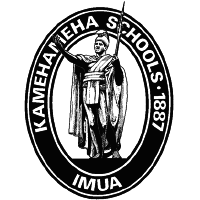TRUSTS & RESOURCES
.
THE OFFICE OF HAWAIIAN AFFAIRS
OHA’s mission is to mālama Hawai’i’s people and environmental resources and OHA’s assets, toward ensuring the perpetuation of the culture, the enhancement of lifestyle and the protection of entitlements of Native Hawaiians.
OHA’s annual core operating budget is approximately $36 million. OHA dedicates resources to advocacy and research efforts to protect and enhance cultural resources as well as generate opportunities for Native Hawaiians in areas such as education and economic self-sufficiency. In fiscal year 2015, OHA provided approximately $10.8 million in community grants. OHA’s grants contribute greatly to the economy of the State of Hawai`i by creating jobs and assisting our most underserved. OHA’s efforts reach thousands of people statewide.
The Office of Hawaiian Affairs was born of a collective and compassionate effort by delegates to the state Constitutional Convention of 1978. They spoke to a sense of justice; to the righting of wrongs suffered by the indigenous people of the Hawaiian Islands for 200 years..
HRS 10-1
(a) The people of the State of Hawaii and the United States of America as set forth and approved in the Admission Act, established a public trust which includes among other responsibilities, betterment of conditions for native Hawaiians. The people of the State of Hawaii reaffirmed their solemn trust obligation and responsibility to native Hawaiians and furthermore declared in the state constitution that there be an office of Hawaiian affairs to address the needs of the aboriginal class of people of Hawaii.
(b) It shall be the duty and responsibility of all state departments and instrumentalities of state government providing services and programs which affect native Hawaiians and Hawaiians to actively work toward the goals of this chapter and to cooperate with and assist wherever possible the office of Hawaiian affairs.
HRS 10- 3
The purposes of the office of Hawaiian affairs include:
(1) The betterment of conditions of native Hawaiians. A pro rata portion of all funds derived from the public land trust shall be funded in an amount to be determined by the legislature for this purpose, and shall be held and used solely as a public trust for the betterment of the conditions of native Hawaiians. For the purpose of this chapter, the public land trust shall be all proceeds and income from the sale, lease, or other disposition of lands ceded to the United States by the Republic of Hawaii under the joint resolution of annexation, approved July 7, 1898 (30 Stat. 750), or acquired in exchange for lands so ceded, and conveyed to the State of Hawaii by virtue of section 5(b) of the Act of March 18, 1959 (73 Stat. 4, the Admissions Act), (excluding therefrom lands and all proceeds and income from the sale, lease, or disposition of lands defined as “available lands” by section 203 of the Hawaiian Homes Commission Act, 1920, as amended), and all proceeds and income from the sale, lease, or other disposition of lands retained by the United States under sections 5(c) and 5(d) of the Act of March 18, 1959, later conveyed to the State under section 5(e);
(2) The betterment of conditions of Hawaiians;
(3) Serving as the principal public agency in this State responsible for the performance, development, and coordination of programs and activities relating to native Hawaiians and Hawaiians; except that the Hawaiian Homes Commission Act, 1920, as amended, shall be administered by the Hawaiian homes commission;
(4) Assessing the policies and practices of other agencies impacting on native Hawaiians and Hawaiians, and conducting advocacy efforts for native Hawaiians and Hawaiians;
(5) Applying for, receiving, and disbursing, grants and donations from all sources for native Hawaiian and Hawaiian programs and services; and
(6) Serving as a receptacle for reparations.
LAND
OHA is the State’s 13th largest landowner managing approximately 28,000 acres consisting of legacy lands, programmatic lands, and commercial real estate.
PORTFOLIO
In fiscal year 2015, OHA provided approximately $10.8 million in grants to community programs and organizations, serving thousands of people statewide. This does not include money spent on advocacy and research efforts to protect and enhance cultural resources as well as generate opportunities for Native Hawaiians in areas such as education and financial development. As of June 30, 2014 OHA’s investment account was valued at approximately $370 million. This figure does not include land value.
THE DEPARTMENT OF HAWAIIAN HOMELANDS
The Department of Hawaiian Homelands manages 203,500 acres of land throughout the state. There are currently 9,850 leases on 40,000 acres and DHHL manages $27M in direct loans on 1,739 of those leases. DHHL plays a role in the management of the loans on the remainder of the leases, but is not the direct lender. The remaining 163,500 acres include lands that are currently reserved for homestead development, used for general leases to produce revenues, managed for conservation purposes, cultural sites, or are considered hazardous areas.
DHHL manages $165.3M allocated in various funds. However, annual $30M payments from the Act 14 settlement in 1995 will expire in 2015. There are currently 26,000 people on the homestead waitlist and expenditures are projected to far outpace incoming revenues in the coming years.
Established by the Hawaiian Homes Commission Act of 1920 (HHCA) by U.S. Congress. For years, Hawaii Congressional Representative Prince Jonah Kūhiō Kalanianole advocated for Native Hawaiians to be granted an opportunity to return to the land and lifestyle that had been thrown into disarray as a result of western influence and the overthrow of the Hawaiian Kingdom. The HHCA was passed in 1920 and set aside 200,000 acres of land in trust to be used for homesteads for native Hawaiians.
- To manage the Hawaiian Home Lands Trust effectively, and to develop and deliver land to native Hawaiians. We will partner with others towards developing self-sufficient and healthy communities.
- To manage effectively the trust’s land, water, and natural resources.
- To develop and provide programs and services that best meet the overall needs of native Hawaiians.
- To develop and deliver land for award on an on-going basis.
- To effectively develop and manage financial resources.
- To manage effectively the department’s human resources.
- To establish better relationships with the native Hawaiian community, governmental agencies, individual homestead communities, and the community-at-large.
HHCA § 101
(a) The Congress of the United States and the State of Hawaii declare that the policy of this Act is to enable native Hawaiians to return to their lands in order to fully support self-sufficiency for native Hawaiians and the self-determination of native Hawaiians in the administration of this Act, and the preservation of the values, traditions, and culture of native Hawaiians.
(b) The principal purposes of this Act include but are not limited to:
o (1) Establishing a permanent land base for the benefit and use of native Hawaiians, upon which they may live, farm, ranch, and otherwise engage in commercial or industrial or any other activities as authorized in this Act;
o (2) Placing native Hawaiians on the lands set aside under this Act in a prompt and efficient manner and assuring long-term tenancy to beneficiaries of this Act and their successors;
o (3) Preventing alienation of the fee title to the lands set aside under this Act so that these lands will always be held in trust for continued use by native Hawaiians in perpetuity;
o (4) Providing adequate amounts of water and supporting infrastructure, so that homestead lands will always be usable and accessible; and
o (5) Providing financial support and technical assistance to native Hawaiian beneficiaries of this Act so that by pursuing strategies to enhance economic self-sufficiency and promote community-based development, the traditions, culture and quality of life of native Hawaiians shall be forever self-sustaining.
(c) In recognition of the solemn trust created by this Act, and the historical government to government relationship between the United States and Kingdom of Hawaii, the United States and the State of Hawaii hereby acknowledge the trust established under this Act and affirm their fiduciary duty to faithfully administer the provisions of this Act on behalf of the native Hawaiian beneficiaries of the Act.
(d) Nothing in this Act shall be construed to:
o (1) Affect the rights of the descendants of the indigenous citizens of the Kingdom of Hawaii to seek redress of any wrongful activities associated with the overthrow of the Kingdom of Hawaii; or
o (2) Alter the obligations of the United States and the State of Hawaii to carry out their public trust responsibilities under section 5 of the Admission Act to native Hawaiians and other descendants of the indigenous citizens of the Kingdom of Hawaii.
LAND
203,500 acres
Homestead Leases: 40,000 acres
Land Management Division: 163,500 acres (general leases, conservation, hazardous areas, cultural sites, etc.)
PORTFOLIO
Management of various funds: $165.3 million.
Managing $27,115,096 in direct loans (1739 loans).
KAMEHAMEHA SCHOOLS
Kamehameha Schools is a private charitable educational trust endowed by the will of Hawaiian Princess Bernice Pauahi Bishop (1831-1884), the great-granddaughter and last direct descendant of King Kamehameha I. During her lifetime, Princess Pauahi witnessed the rapid decline of the Hawaiian population. With that decline came a challenge to preserve the Hawaiian language and culture she held dear. The trust she left has lead allowed thousands of Hawaiian children and youth to obtain quality education at grade school, college, and graduate school levels.
Kamehameha Schools is able to fulfill its mission through the management of its endowment and assets. Currently, Kamehameha’s land holdings amount to approximately 363,000 acres. It spends approximately $339M annually on fulfilling the mission of the trust. Kamehameha’s spending reaches far beyond the walls of it three campuses, funding extends to numerous programs that reach approximately 47,000 learners annually.
(Source: Kamehameha Schools)
Princess Bernice Pauahi Bishop knew that education would be key to the survival of her people, so in an enduring act of aloha, she left them a precious gift upon her passing – 375,000 acres of ancestral land. She instructed the trustees of her estate to use the land to educate her people. Today, her endowment supports an educational system that serves thousands of Hawaiian learners in Hawai‘i and across the nation.
Kamehameha Schools is a private charitable educational trust endowed by the will of Hawaiian Princess Bernice Pauahi Bishop (1831-1884), the great-granddaughter and last direct descendant of King Kamehameha I.
During her lifetime, Princess Pauahi witnessed the rapid decline of the Hawaiian population. With that decline came a challenge to preserve the Hawaiian language and culture she held dear.
(Source: Kamehameha Schools)
- grounded in spiritual and Christian values;
- intellectually, emotionally, and socially self-reliant;
- resourceful, resilient, life-long learners;
- equipped with the skills they need to succeed in endeavors of their choosing;
- responsible, ethical, contributing members of their multi-cultural and diverse communities, and
- prepared to practice and perpetuate the Hawaiian values and traditions of Ke Ali‘i Pauahi.
(Source: Kamehameha Schools)
LAND
363,000 acres. 205,000 zoned for agriculture, 140,000 for conservation, 15,000 for commercial, 3,000 for residential.
Hawai‘i real estate today represents 32 percent of the value of Kamehameha’s Endowment Fund. Kamehameha’s global financial assets portfolio — worth an estimated $6 billion as of June 2012 — comprises the remaining two-thirds of the school’s endowment and is balanced across a broad range of investment asset classes.
With a 1,500 acre commercial real estate portfolio, the Commercial Real Estate Division (CRED) of Kamehameha Schools generates more than $230 million and $130 million net income annually to support the mission of Kamehameha Schools. The high-performing portfolio consists of a diversified mix of assets in the state of Hawaii and includes significant land assemblages in the urban core that are being master planned and positioned for higher and better uses. Through active and prudent investment management, Kamehameha Schools has achieved total returns in the top 5 percent of peer benchmarks over the past 1, 3 and 5 years.
Kamehameha Schools’ 1,500-acre commercial real estate portfolio is small in contrast to its 363,000 acres of land statewide. Properties in the commercial portfolio include some of the state’s largest shopping centers, hotels and resorts, as well as office and industrial properties. As a legacy landowner with a unique, kama‘aina perspective, Kamehameha Schools actively manages and develops its real estate in order to enhance value and provide operational revenue to educate more than 47,000 Native Hawaiian learners each year.
PORTFOLIO
$9.2 billion total value (32% land; 68% financial investment portfolio) with total annual trust spending in 2012 at $339 million.
THE QUEEN LILI‘UOKALANI TRUST
The Queen Lili`uokalani Trust is a private operating foundation founded in 1909. The mission of the trust is to serve orphan and destitute children with preference given to Native Hawaiian children. The trust serves approximately 10,000 children annually through direct services and reaches thousands more through collaboration with community partners.
(Source: Queen Lili`uokalani Trust)
“…He will keep His promise, and will listen to the voices of His Hawaiian children lamenting for their homes. It is for them that I would give the last drop of my blood; it is for them that I would spend, nay, am spending, everything belonging to me.”
— Queen Lili‘uokalani
This powerful and moving quote by Queen Lili‘uokalani serves as an inspiration for us to perpetuate her legacy of care and compassion for the orphan and destitute children of Hawai‘i.
It is the kuleana (responsibility) of the Endowment Group to preserve and grow the assets of the Trust by managing the Trust’s real property, developing Trust real estate, and directing the Trust’s investment portfolio.
The Queen Lili`uokalani Trust is a private operating foundation founded in 1909. The mission of the trust is to serve orphan and destitute children with preference given to Native Hawaiian children. The trust serves approximately 10,000 children annually through direct services and reaches thousands more through collaboration with community partners.
A diversified portfolio of real estate, marketable securities and private investments provides the resources to support mission-related programs and activities.
LAND
6,200 acres, 92% of real estate is conservation/agricultural land, the remainder is zoned commercial, industrial and residential.
Real estate represents 69% of the value of the endowment assets.
PORTFOLIO
The investment portfolio makes up of the value of the trust ($164 million). Historical spending from the endowment assets averages 3.8%; This exceeds the current minimum required distribution of 3.3%. Spending on mission-related activities helps to achieve our goal of assisting as many Hawaiian children as we can, in perpetuity.
LUNALILO HOME
The purpose of the trust was to build a home to accommodate the poor, destitute, and infirmed people of Native Hawaiian blood or extraction, with preference given to older people. The will charged the trustees with selling all of the estate’s land to build and maintain the home.
King Lunalilo’s will directed that his estate be utilized to establish and maintain a home for the poor, destitute, and sick persons of Hawaiian blood with preference to elders. The first home opened in 1883 in the area known as Kewalo and moved to Maunalua (now known as Hawai‘i Kai) in 1927. Lunalilo Home provides subsidies, to the extent allowed by finances, to support Hawaiians who are unable to care for themselves and who do not have the financial resources to pay for residential care.
King Lunalilo’s will directed that his estate be utilized to establish and maintain a home for the poor, destitute, and sick persons of Hawaiian blood with preference to elders. The first home opened in 1883 in the area known as Kewalo and moved to Maunalua (now known as Hawai‘i Kai) in 1927. Lunalilo Home provides subsidies, to the extent allowed by finances, to support Hawaiians who are unable to care for themselves and who do not have the financial resources to pay for residential care.
QUEEN EMMA LAND COMPANY
The Queen’s Medical Center is a private non-profit medical care facility and largest private hospital in Hawaii. It is licensed to operate 505 acute care beds and 28 sub-acute beds. The medical center has more than 3,000 employees and 1,200 physicians on staff.
King Kamehameha IV, Alexander Liholiho, in his first speech, stated the need for a hospital to treat the native population. The Hawaiian population had plummeted from the time of Captain Cook’s arrival due to introduced diseases. The extinction of the native populace was a very real possibility. Beloved by her people, his wife, Queen Emma with her friend Queen Victoria, helped to fund worthy causes, among which was the first hospital, organizing a hospital auxiliary of women to help with the ill. To recognize and honor Emma’s efforts, it was decided to call the new hospital “Queen’s.” Originally, the building housed just 18 patient beds, upon opening its doors on August 1, 1859. Within a year, a much larger building with room for 124 beds was built on the same site where The Queen’s Medical Center stands today.
Queen Emma enthusiastically supported the dream of a hospital, and both she and her husband, King Kamehameha IV, personally went door-to-door soliciting the necessary funding. The royal couple exceeded their goal in just over a month, raising $13,530. In turn, the Legislature appropriated $6,000.
Emma Kaleleonalani left the bulk of her estate, some 13,000 acres of land on the Big Island and in Waikiki on Oahu, in trust for the hospital that honors her. The Queen’s Medical Center mission is to fulfill the intent of Queen Emma and King Kamehameha IV to provide in perpetuity quality health care services to improve the well-being of Native Hawaiians and all the people of Hawaii.
The Queen Emma Land Company is a non-profit organization established in 1979 to support The Queen’s Medical Center and its affiliates in providing quality health care in Hawaii.
The company accomplishes this by managing and enhancing the income-generating potential of the lands left to the Queen’s Hospital by Queen Emma in 1885, and additional properties owned by The Queen’s Health Systems.
Queen Emma Land Company is a non-profit organization established in 1979 to support The Queen’s Medical Center and its affiliates in providing quality health care in Hawaii.
The company accomplishes this by managing and enhancing the incoming-generating potential of the lands left to the Queen’s Hospital by Queen Emma in 1885, and additional properties owned by The Queen’s Health Systems.
King Kamehameha IV, Alexander Liholiho, in his first speech, states the need for a hospital to treat the native population. The Hawaiian population had plummeted from 350,000 at the time of Captain Cook’s arrival, to 70,000 due to introduced diseases. The extinction of the native populace was a very real possibility. Beloved by her people, Queen Emma and with her friend Queen Victoria, helped to fund worthy causes, among which was the first hospital, organizing a hospital auxiliary of women to help with the ill. To recognize and honor Emma’s efforts, it was decided to call the new hospital “Queen’s.” Originally, the building housed just 18 patient beds, upon opening its doors on August 1, 1859. Within a year, a much larger building with room for 124 beds was built on the same site where The Queen’s Medical Center stands today.
Queen Emma enthusiastically supported the dream of a hospital, and both she and her husband, King Kamehameha IV, personally went door-to-door soliciting the necessary funding. The royal couple exceeded their goal in just over a month, raising $13,530. In turn, the Legislature appropriated $6,000.
Emma Kaleleonalani left the bulk of her estate, some 13,000 acres of land on the Big Island and in Waikiki on Oahu, in trust for the hospital that honors her.





